Zuguo Chen
Automatic diagnosis of cardiac magnetic resonance images based on semi-supervised learning
May 23, 2024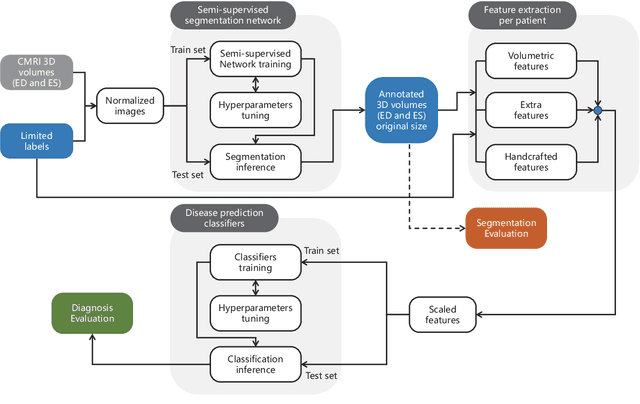

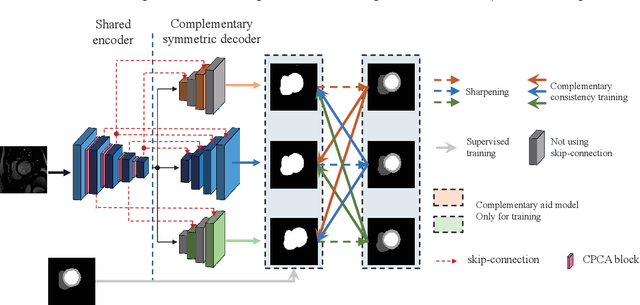
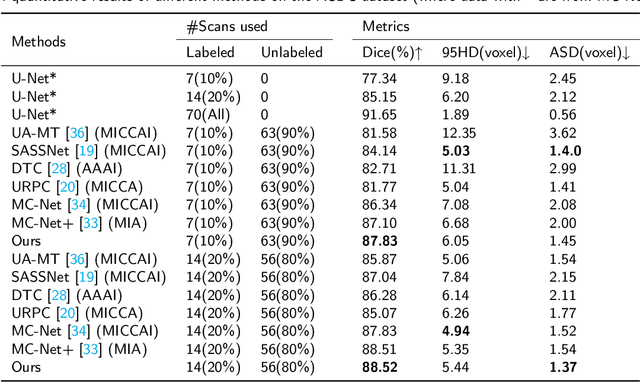
Abstract:Cardiac magnetic resonance imaging (MRI) is a pivotal tool for assessing cardiac function. Precise segmentation of cardiac structures is imperative for accurate cardiac functional evaluation. This paper introduces a semi-supervised model for automatic segmentation of cardiac images and auxiliary diagnosis. By harnessing cardiac MRI images and necessitating only a small portion of annotated image data, the model achieves fully automated, high-precision segmentation of cardiac images, extraction of features, calculation of clinical indices, and prediction of diseases. The provided segmentation results, clinical indices, and prediction outcomes can aid physicians in diagnosis, thereby serving as auxiliary diagnostic tools. Experimental results showcase that this semi-supervised model for automatic segmentation of cardiac images and auxiliary diagnosis attains high accuracy in segmentation and correctness in prediction, demonstrating substantial practical guidance and application value.
Three-layer deep learning network random trees for fault diagnosis in chemical production process
May 01, 2024Abstract:With the development of technology, the chemical production process is becoming increasingly complex and large-scale, making fault diagnosis particularly important. However, current diagnostic methods struggle to address the complexities of large-scale production processes. In this paper, we integrate the strengths of deep learning and machine learning technologies, combining the advantages of bidirectional long and short-term memory neural networks, fully connected neural networks, and the extra trees algorithm to propose a novel fault diagnostic model named three-layer deep learning network random trees (TDLN-trees). First, the deep learning component extracts temporal features from industrial data, combining and transforming them into a higher-level data representation. Second, the machine learning component processes and classifies the features extracted in the first step. An experimental analysis based on the Tennessee Eastman process verifies the superiority of the proposed method.
Channel prior convolutional attention for medical image segmentation
Jun 08, 2023Abstract:Characteristics such as low contrast and significant organ shape variations are often exhibited in medical images. The improvement of segmentation performance in medical imaging is limited by the generally insufficient adaptive capabilities of existing attention mechanisms. An efficient Channel Prior Convolutional Attention (CPCA) method is proposed in this paper, supporting the dynamic distribution of attention weights in both channel and spatial dimensions. Spatial relationships are effectively extracted while preserving the channel prior by employing a multi-scale depth-wise convolutional module. The ability to focus on informative channels and important regions is possessed by CPCA. A segmentation network called CPCANet for medical image segmentation is proposed based on CPCA. CPCANet is validated on two publicly available datasets. Improved segmentation performance is achieved by CPCANet while requiring fewer computational resources through comparisons with state-of-the-art algorithms. Our code is publicly available at \url{https://github.com/Cuthbert-Huang/CPCANet}.
Complementary consistency semi-supervised learning for 3D left atrial image segmentation
Oct 04, 2022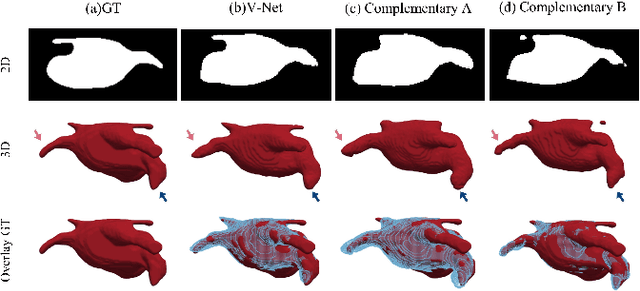
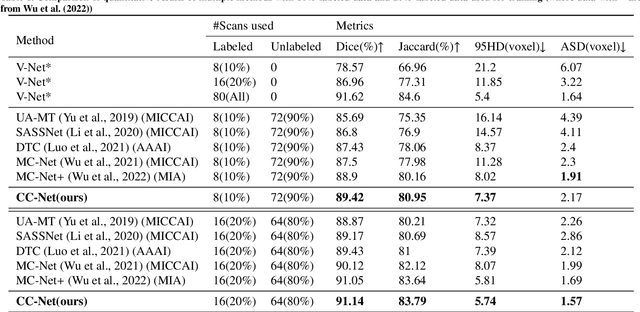
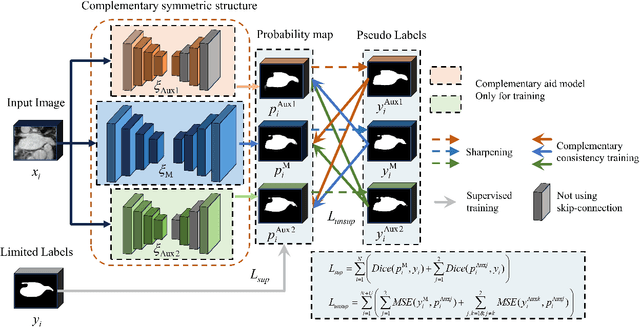

Abstract:A network based on complementary consistency training (CC-Net) is proposed for semi-supervised left atrial image segmentation in this paper. From the perspective of complementary information, CC-Net effectively utilizes unlabeled data and resolves the problem that semi-supervised segmentation algorithms currently in use have a limited capacity to extract information from unlabeled data. A primary model and two complementary auxiliary models are part of the complementary symmetric structure of the CC-Net. A complementary consistency training is formed by the inter-model perturbation between the primary model and the auxiliary models. The main model is better able to concentrate on the ambiguous region due to the complementary information provided by the two auxiliary models. Additionally, forcing consistency between the primary model and the auxiliary models makes it easier to obtain decision boundaries with little uncertainty. CC-Net was validated in the benchmark dataset of 2018 left atrial segmentation challenge, reaching Dice of 89.42% with 10% labeled data training and 91.14% with 20% labeled data training. By comparing with current state-of-the-art algorithms, CC-Net has the best segmentation performance and robustness. Our code is publicly available at https://github.com/Cuthbert-Huang/CC-Net.
 Add to Chrome
Add to Chrome Add to Firefox
Add to Firefox Add to Edge
Add to Edge